Stefano Basagni
AI-assisted Agile Propagation Modeling for Real-time Digital Twin Wireless Networks
Oct 29, 2024Abstract:Accurate channel modeling in real-time faces remarkable challenge due to the complexities of traditional methods such as ray tracing and field measurements. AI-based techniques have emerged to address these limitations, offering rapid, precise predictions of channel properties through ground truth data. This paper introduces an innovative approach to real-time, high-fidelity propagation modeling through advanced deep learning. Our model integrates 3D geographical data and rough propagation estimates to generate precise path gain predictions. By positioning the transmitter centrally, we simplify the model and enhance its computational efficiency, making it amenable to larger scenarios. Our approach achieves a normalized Root Mean Squared Error of less than 0.035 dB over a 37,210 square meter area, processing in just 46 ms on a GPU and 183 ms on a CPU. This performance significantly surpasses traditional high-fidelity ray tracing methods, which require approximately three orders of magnitude more time. Additionally, the model's adaptability to real-world data highlights its potential to revolutionize wireless network design and optimization, through enabling real-time creation of adaptive digital twins of real-world wireless scenarios in dynamic environments.
Design and Evaluation of SEANet: a Software-defined Networking Platform for the Internet of Underwater Things
Mar 01, 2024



Abstract:Investigating and safeguarding our oceans is vital for a host of applications and tasks, including combating climate change, ensuring the integrity of subsea infrastructures, and for coastal protection. Achieving these essential functions depends on the deployment of cost-effective, versatile underwater sensor networks that can efficiently collect and transmit data to land. However, the success of such networks is currently hindered by the significant limitations of existing underwater modems, which limits their operational use to a narrow range of applications. This paper presents and evaluates the performance of the SEANet software-defined networking platform, for the Internet of Underwater Things (IoUT), addressing the limitations of existing underwater communication technologies. It presents the development and comprehensive testing of an adaptable, high-data-rate, and integration-friendly underwater platform that reconfigures in real-time to meet the demands of various marine applications. With an acoustic front end, the platform significantly outperforms conventional modems, achieving more than double the data rate at 150 kbit/s. Experiments conducted in oceanic conditions demonstrate its capabilities in channel characterization, OFDM link establishment, and compatibility with the JANUS communication standard. Our platform advances the IoUT by providing a versatile, scalable solution that can incorporate multiple physical layers and support an array of tasks, making it pivotal for real-time ocean data analysis and the expansion of ocean-related digital applications.
Colosseum as a Digital Twin: Bridging Real-World Experimentation and Wireless Network Emulation
Apr 13, 2023



Abstract:Wireless network emulators are being increasingly used for developing and evaluating new solutions for Next Generation (NextG) wireless networks. However, the reliability of the solutions tested on emulation platforms heavily depends on the precision of the emulation process, model design, and parameter settings. To address, obviate or minimize the impact of errors of emulation models, in this work we apply the concept of Digital Twin (DT) to large-scale wireless systems. Specifically, we demonstrate the use of Colosseum, the world's largest wireless network emulator with hardware-in-the-loop, as a DT for NextG experimental wireless research at scale. As proof of concept, we leverage the Channel emulation scenario generator and Sounder Toolchain (CaST) to create the DT of a publicly-available over-the-air indoor testbed for sub-6 GHz research, namely, Arena. Then, we validate the Colosseum DT through experimental campaigns on emulated wireless environments, including scenarios concerning cellular networks and jamming of Wi-Fi nodes, on both the real and digital systems. Our experiments show that the DT is able to provide a faithful representation of the real-world setup, obtaining an average accuracy of up to 92.5% in throughput and 80% in Signal to Interference plus Noise Ratio (SINR).
Intelligent Closed-loop RAN Control with xApps in OpenRAN Gym
Aug 31, 2022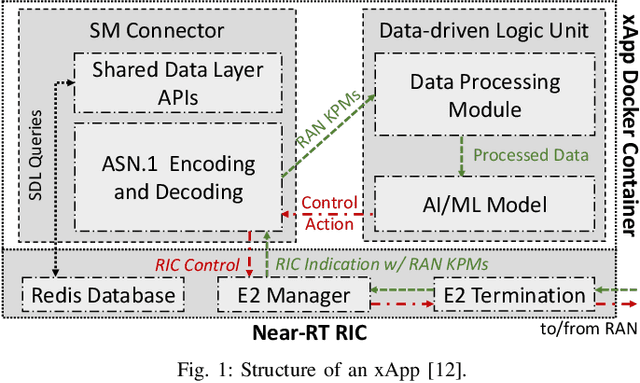


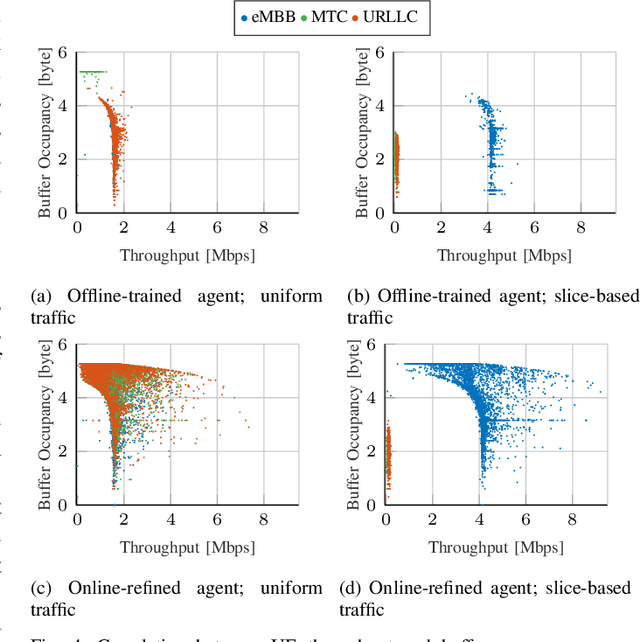
Abstract:Softwarization, programmable network control and the use of all-encompassing controllers acting at different timescales are heralded as the key drivers for the evolution to next-generation cellular networks. These technologies have fostered newly designed intelligent data-driven solutions for managing large sets of diverse cellular functionalities, basically impossible to implement in traditionally closed cellular architectures. Despite the evident interest of industry on Artificial Intelligence (AI) and Machine Learning (ML) solutions for closed-loop control of the Radio Access Network (RAN), and several research works in the field, their design is far from mainstream, and it is still a sophisticated and often overlooked operation. In this paper, we discuss how to design AI/ML solutions for the intelligent closed-loop control of the Open RAN, providing guidelines and insights based on exemplary solutions with high-performance record. We then show how to embed these solutions into xApps instantiated on the O-RAN near-real-time RAN Intelligent Controller (RIC) through OpenRAN Gym, the first publicly available toolbox for data-driven O-RAN experimentation at scale. We showcase a use case of an xApp developed with OpenRAN Gym and tested on a cellular network with 7 base stations and 42 users deployed on the Colosseum wireless network emulator. Our demonstration shows the high degree of flexibility of the OpenRAN Gym-based xApp development environment, which is independent of deployment scenarios and traffic demand.
CaST: A Toolchain for Creating and Characterizing Realistic Wireless Network Emulation Scenarios
Aug 08, 2022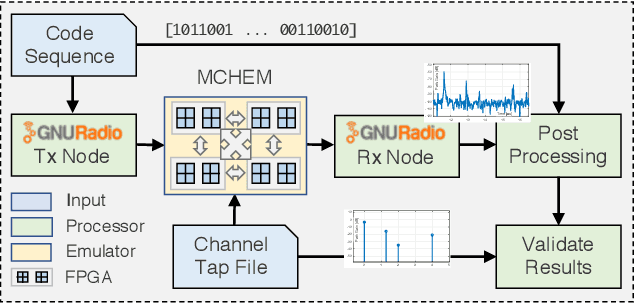

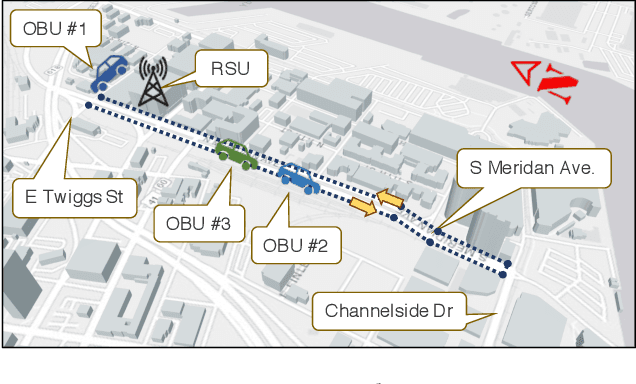
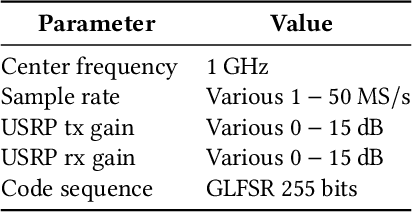
Abstract:Large-scale wireless testbeds have been extensively used by researchers in the past years. Among others, high-fidelity FPGA-based emulation platforms have unique capabilities in faithfully mimicking the conditions of real-world wireless environments in real-time, at scale, and with full repeatability. However, the reliability of the solutions developed in emulated platforms is heavily dependent on the emulation precision. CaST brings to the wireless network emulator landscape what it has been missing so far: an open, virtualized and software-based channel generator and sounder toolchain with unmatched precision in creating and characterizing quasi-real-world wireless network scenarios. CaST consists of (i) a framework to create mobile wireless scenarios from ray-tracing models for FPGA-based emulation platforms, and (ii) a containerized Software Defined Radio-based channel sounder to precisely characterize the emulated channels. We design, deploy and validate multi-path mobile scenarios on the world's largest wireless network emulator, Colosseum, and further demonstrate that CaST achieves up to 20 ns accuracy in sounding the Channel Impulse Response tap delays, and 0.5 dB accuracy in measuring the tap gains.
OpenRAN Gym: AI/ML Development, Data Collection, and Testing for O-RAN on PAWR Platforms
Jul 25, 2022
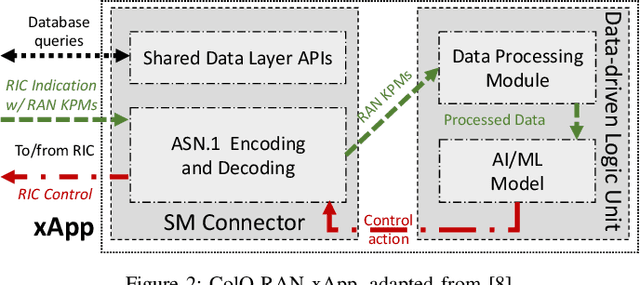

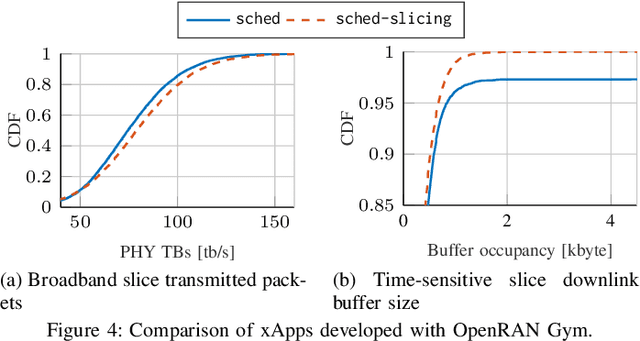
Abstract:Open Radio Access Network (RAN) architectures will enable interoperability, openness and programmable data-driven control in next generation cellular networks. However, developing and testing efficient solutions that generalize across heterogeneous cellular deployments and scales, and that optimize network performance in such diverse environments is a complex task that is still largely unexplored. In this paper we present OpenRAN Gym, a unified, open, and O-RAN-compliant experimental toolbox for data collection, design, prototyping and testing of end-to-end data-driven control solutions for next generation Open RAN systems. OpenRAN Gym extends and combines into a unique solution several software frameworks for data collection of RAN statistics and RAN control, and a lightweight O-RAN near-real-time RAN Intelligent Controller (RIC) tailored to run on experimental wireless platforms. We first provide an overview of the various architectural components of OpenRAN Gym and describe how it is used to collect data and design, train and test artificial intelligence and machine learning O-RAN-compliant applications (xApps) at scale. We then describe in detail how to test the developed xApps on softwarized RANs and provide an example of two xApps developed with OpenRAN Gym that are used to control a network with 7 base stations and 42 users deployed on the Colosseum testbed. Finally, we show how solutions developed with OpenRAN Gym on Colosseum can be exported to real-world, heterogeneous wireless platforms, such as the Arena testbed and the POWDER and COSMOS platforms of the PAWR program. OpenRAN Gym and its software components are open-source and publicly-available to the research community.
Understanding O-RAN: Architecture, Interfaces, Algorithms, Security, and Research Challenges
Feb 02, 2022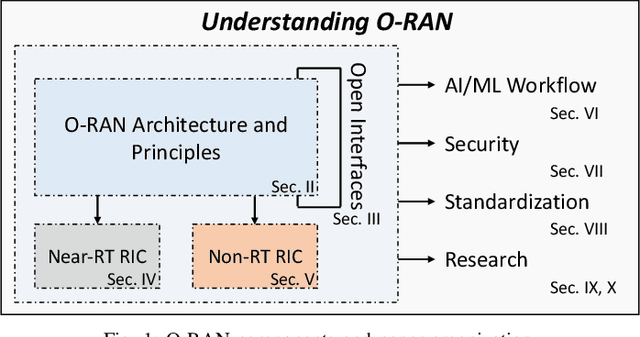
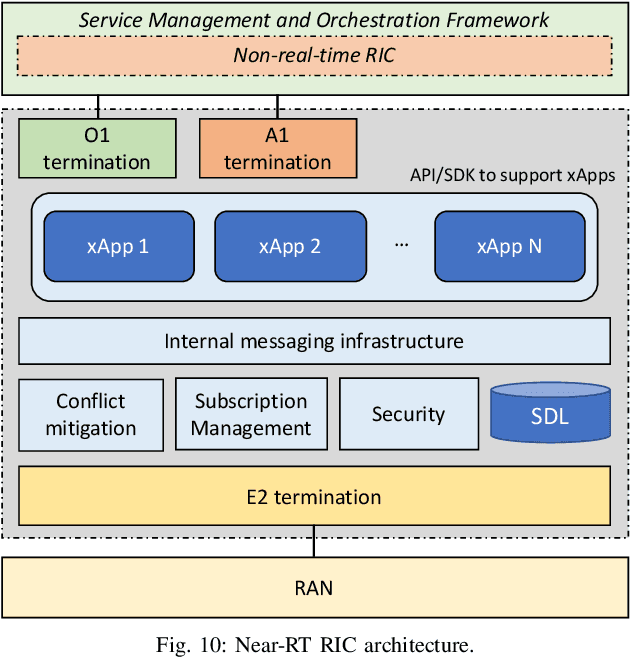

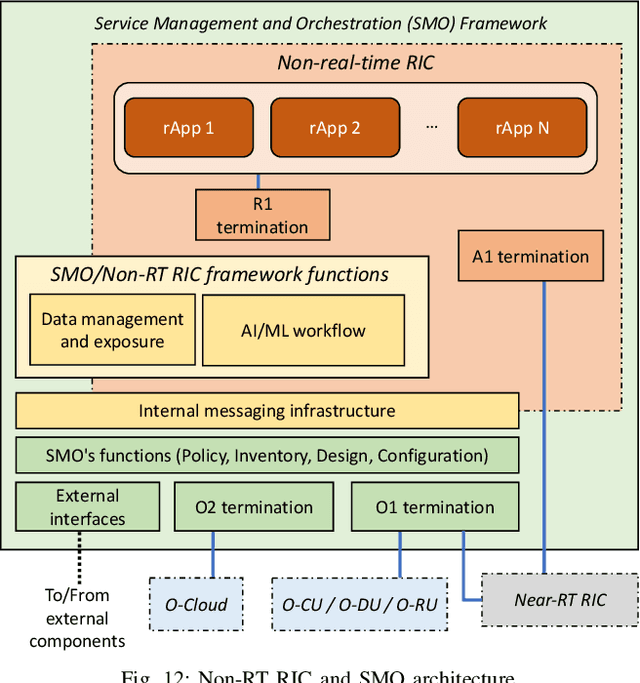
Abstract:Open Radio Access Network (RAN) and its embodiment through the O-RAN Alliance specifications have the potential to truly transform the telecom ecosystem. O-RAN promotes virtualized and disaggregated RANs, where disaggregated components are connected via open interfaces and optimized by intelligent controllers. The result is a new paradigm for the RAN design, deployment, and operations: O-RAN networks can be built with multi-vendor, interoperable components, and can be programmatically optimized through a centralized abstraction layer and data-driven closed-loop control. Therefore, understanding O-RAN, its architecture, its interfaces, and workflows is key for researchers and practitioners in the wireless community. In this article, we present the first detailed tutorial on O-RAN. We also discuss the main research challenges and review early results. We provide a deep dive on the O-RAN specifications, describing its architecture, design principles, and the O-RAN interfaces. We then describe how the O-RAN RAN Intelligent Controllers (RICs) can be used to effectively control and manage 3GPP-defined RANs. Based on this, we discuss innovations and challenges that relate to O-RAN networks, including the Artificial Intelligence (AI) and Machine Learning (ML) workflows that the architecture and interfaces enable, and security and standardization issues. Finally, we review experimental research platforms that can be used to design and test O-RAN networks, along with recent research results, and we outline future directions for O-RAN development.
ColO-RAN: Developing Machine Learning-based xApps for Open RAN Closed-loop Control on Programmable Experimental Platforms
Jan 12, 2022


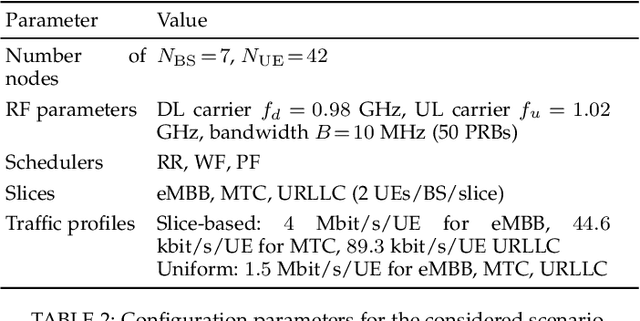
Abstract:In spite of the new opportunities brought about by the Open RAN, advances in ML-based network automation have been slow, mainly because of the unavailability of large-scale datasets and experimental testing infrastructure. This slows down the development and widespread adoption of Deep Reinforcement Learning (DRL) agents on real networks, delaying progress in intelligent and autonomous RAN control. In this paper, we address these challenges by proposing practical solutions and software pipelines for the design, training, testing, and experimental evaluation of DRL-based closed-loop control in the Open RAN. We introduce ColO-RAN, the first publicly-available large-scale O-RAN testing framework with software-defined radios-in-the-loop. Building on the scale and computational capabilities of the Colosseum wireless network emulator, ColO-RAN enables ML research at scale using O-RAN components, programmable base stations, and a "wireless data factory". Specifically, we design and develop three exemplary xApps for DRL-based control of RAN slicing, scheduling and online model training, and evaluate their performance on a cellular network with 7 softwarized base stations and 42 users. Finally, we showcase the portability of ColO-RAN to different platforms by deploying it on Arena, an indoor programmable testbed. Extensive results from our first-of-its-kind large-scale evaluation highlight the benefits and challenges of DRL-based adaptive control. They also provide insights on the development of wireless DRL pipelines, from data analysis to the design of DRL agents, and on the tradeoffs associated to training on a live RAN. ColO-RAN and the collected large-scale dataset will be made publicly available to the research community.
Colosseum: Large-Scale Wireless Experimentation Through Hardware-in-the-Loop Network Emulation
Oct 20, 2021
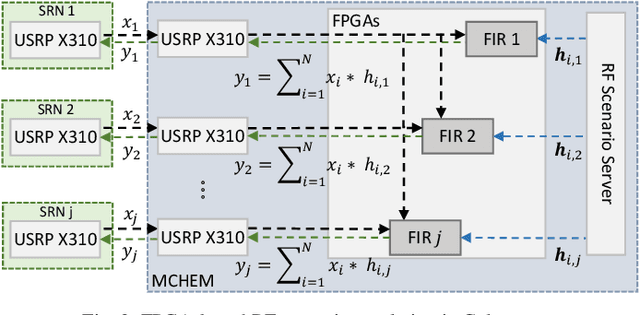
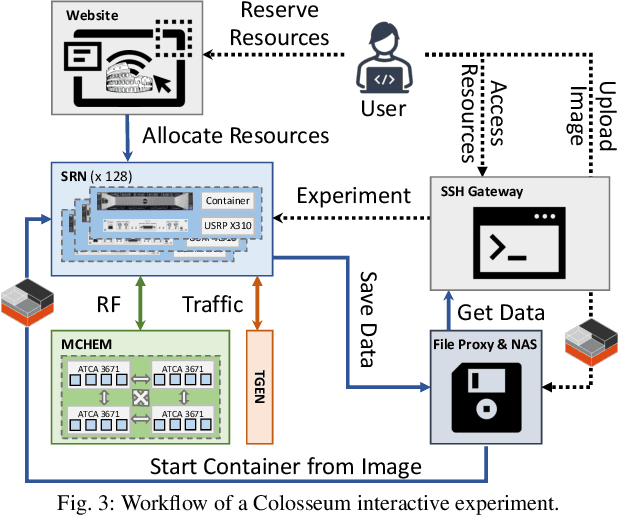
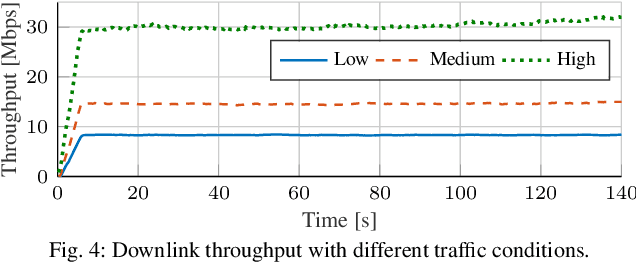
Abstract:Colosseum is an open-access and publicly-available large-scale wireless testbed for experimental research via virtualized and softwarized waveforms and protocol stacks on a fully programmable, "white-box" platform. Through 256 state-of-the-art Software-defined Radios and a Massive Channel Emulator core, Colosseum can model virtually any scenario, enabling the design, development and testing of solutions at scale in a variety of deployments and channel conditions. These Colosseum radio-frequency scenarios are reproduced through high-fidelity FPGA-based emulation with finite-impulse response filters. Filters model the taps of desired wireless channels and apply them to the signals generated by the radio nodes, faithfully mimicking the conditions of real-world wireless environments. In this paper we describe the architecture of Colosseum and its experimentation and emulation capabilities. We then demonstrate the effectiveness of Colosseum for experimental research at scale through exemplary use cases including prevailing wireless technologies (e.g., cellular and Wi-Fi) in spectrum sharing and unmanned aerial vehicle scenarios. A roadmap for Colosseum future updates concludes the paper.
What is A Wireless UAV? A Design Blueprint for 6G Flying Wireless Nodes
Oct 06, 2021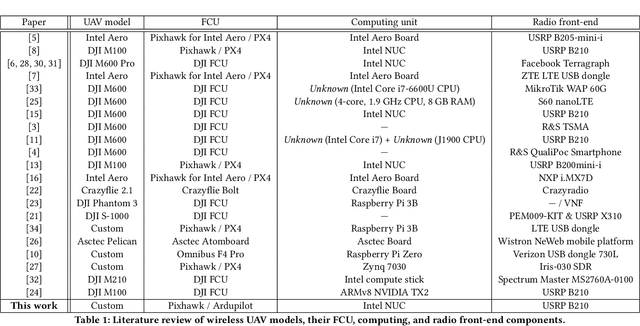
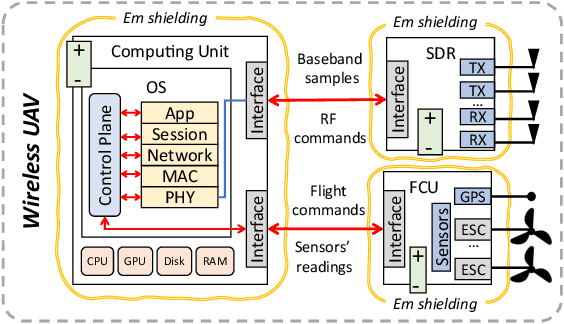
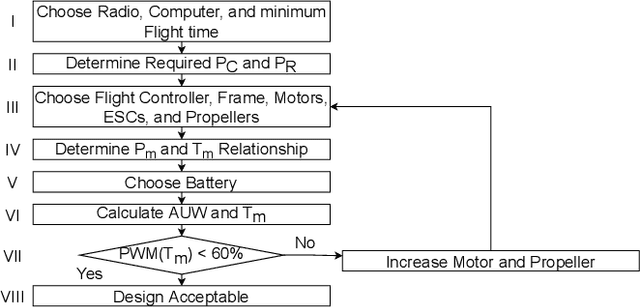
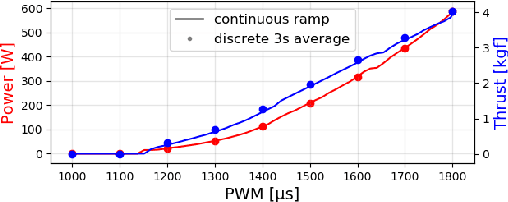
Abstract:Wireless Unmanned Aerial Vehicles (UAVs) were introduced in the world of 4th generation networks (4G) as cellular users, and have attracted the interest of the wireless community ever since. In~5G, UAVs operate also as flying Base Stations providing service to ground users. They can also implement independent off-the-grid UAV networks. In~6G networks, wireless UAVs will connect ground users to in-orbit wireless infrastructure. As the design and prototyping of wireless UAVs are on the rise, the time is ripe for introducing a more precise definition of what is a wireless UAV. In doing so, we revise the major design challenges in the prototyping of wireless UAVs for future 6G spectrum research. We then introduce a new wireless UAV prototype that addresses these challenges. The design of our wireless UAV prototype will be made public and freely available to other researchers.
 Add to Chrome
Add to Chrome Add to Firefox
Add to Firefox Add to Edge
Add to Edge